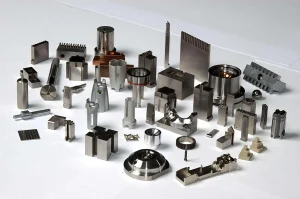5-axis machining has become essential in modern manufacturing. This technology allows for complex shapes and high precision. Various types of 5-axis machines cater to different needs in the industry. In this article, we will explore the main types of 5-axis machines and their unique features.

1. Trunnion 5-Axis Machines
Trunnion 5-axis machines are among the most common types. They feature a rotating table that can tilt and spin, allowing the workpiece to be machined from multiple angles. This design provides excellent stability during machining.
These machines are ideal for larger parts. They are often used in aerospace and automotive industries for components like engine blocks and brackets. The trunnion design enhances precision while minimizing the risk of vibration.
2. Pivoting Head 5-Axis Machines
Pivoting head 5-axis machines use a different approach. In these machines, the cutting tool itself pivots around two axes. This feature allows for precise cuts at various angles without moving the workpiece.
These machines are often more compact. Their design makes them suitable for smaller shops or facilities with limited space. Additionally, they offer versatility, allowing for various applications in mold-making and intricate part production.
3. Continuous 5-Axis Machines
Continuous 5-axis machines provide the most flexibility. They allow simultaneous movement across all five axes, enabling complex contouring and intricate designs. This capability is ideal for parts with complex geometries, such as turbine blades and intricate molds.
Continuous 5-axis machines are commonly used in industries that require high precision. The aerospace and medical sectors benefit from this technology, producing parts that meet strict quality standards. However, these machines can be more expensive due to their advanced capabilities.
4. Hybrid 5-Axis Machines
Hybrid 5-axis machines combine additive and subtractive manufacturing processes. They can both mill and 3D print parts, offering a unique solution for manufacturers. This versatility reduces the need for multiple machines, saving time and resources.
These machines are particularly beneficial in prototyping and custom manufacturing. Companies can create complex geometries with ease, significantly improving design freedom. Hybrid machines are gaining popularity across various sectors, including aerospace and automotive.
5. Gantry 5-Axis Machines
Gantry 5-axis machines feature a bridge-like structure that supports the cutting head. This design allows for larger workpieces and heavy materials. The gantry structure provides stability, making it suitable for machining large components.
These machines are commonly used in industries such as shipbuilding and construction. Their ability to handle heavy materials makes them ideal for producing large parts with high precision. Despite their size, gantry machines deliver excellent performance.
6. 5-Axis CNC Routers
5-axis CNC routers are designed for softer materials such as wood, plastics, and composites. They utilize rotary axes to cut intricate shapes and designs efficiently. These routers are popular in the furniture and cabinetry industries.
While CNC routers may not offer the same precision as other 5-axis machines, they excel in speed and efficiency. They are perfect for high-volume production runs and custom woodworking projects. Additionally, they are often more cost-effective, making them accessible for smaller businesses.
Conclusion
In summary, various types of 5-axis machines cater to different manufacturing needs. Trunnion, pivoting head, continuous, hybrid, gantry, and CNC routers each have unique features that make them suitable for specific applications. Understanding these differences allows manufacturers to choose the right machine for their projects.
As industries continue to evolve, the demand for 5-axis machining will only grow. By investing in the appropriate technology, companies can enhance their capabilities, improve product quality, and remain competitive. Embracing 5-axis machining opens doors to innovation and efficiency in the manufacturing process.






